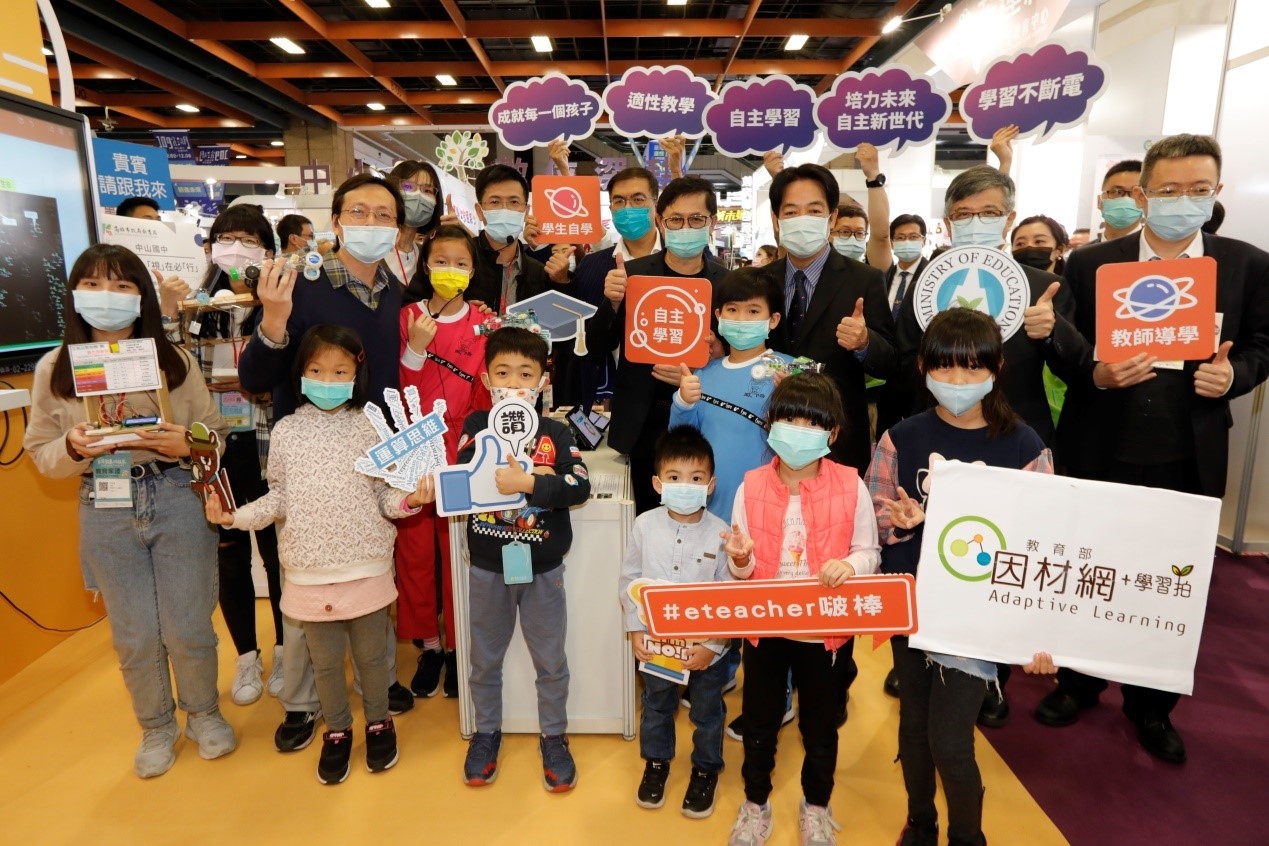Cultivate Capability of Future-Independent New Generation ITmonth’s EdTech Taiwan

The Ministry of Education (MOE) participated in the “ITmonth’s EdTech Taiwan” at Taipei World Trade Center Hall 1 on December 2-6, 2020. Based on the main theme of “Cultivate Capability of Future-Independent New Generation”, the MOE showcased its vision of “taking the initiative”, “engaging in interaction” and “seeking the common good” through IT-assisted teaching and learning incorporated in the new curriculum to develop students' autonomous learning capabilities.
The MOE encouraged teachers to adopt technology-assisted teaching models for autonomous learning to enable students to explore various fields of knowledge, learn critical thinking and cultivate their autonomous learning capabilities. The exhibition organized six themes, “Autonomous Learning” “Interdisciplinary Learning” “Computational Thinking,” “Information Literacy,” “Digital Resources” and “Virtual Reality(VR)/Augmented Reality(AR)” to provide information on diverse teaching, learning methods and resources, and there were also experiential activities for visitors to understand the actual teaching and learning scenarios.
In order to implement the goals of emphasizing and cultivating students' core competencies in “Spontaneity” and “Communication and Interaction” in the Curriculum Guidelines of 12-Year Basic Education, the MOE has implemented the Technology-Assisted Autonomous Learning Promotion Program. This was to develop teachers’ abilities to utilize digital learning platforms and resources, help students develop autonomous learning and implement adaptive instruction, so that students and teachers could improve their confidence when learning and teaching, further enhancing learning motivation and effectiveness.
The “Autonomous Learning” theme included the two concept exhibitions-the “Four-style Learning Experience” and “Featured Courses.” The “Four-style Learning” exhibition enabled teachers and students to immerse themselves in autonomous learning and interaction scenarios-“Students' autonomous learning”, “Joint learning in groups”, “Groups learn from one another” and “Teacher-guided learning”. Visitors would be able to quickly understand how to use the course videos, tests, discussion forums and other functions on the digital learning platforms, further developing students' autonomous learning capabilities. The “Featured Courses” exhibition showed how schools could use information technology to innovate their teaching; for example, the art and creativity interdisciplinary courses offered at Taichung Municipal Kuang-Fu Junior High and Elementary School used window grilles of buildings in the local Kuang-Fu Village as the main theme and incorporated teaching materials from the Adaptive Learning website, programming design and visual arts courses to offer learning about concepts of flat graphics and line symmetry in daily life, so that students could be guided to appreciate the beauty of geometric shapes.
In addition, in the theme of “Interdisciplinary Learning”, diverse learning and horizontal integration were used as the starting points to solve real-life situational problems and develop students’ high-level thinking and problem-solving skills. For example, Xihu Elementary School in Taipei City developed anti-collision detection devices which could reduce collision injuries in school hallways to improve campus safety by using sensors and artistic creativity. The “Computational Thinking” theme used mini-games to enable students to understand the application of and their interest in computational thinking knowledge. The “Digital Resources” theme showed a variety of free digital resources offered by the MOE to enrich learning. In addition, the results from the promotion of “Course-Oriented Digital Maker Education” were also on display such as micro-courses like the “Tracked Vehicle and Electric Vehicle Teaching Aid Platform” which showed how obstacle avoidance, tracing and mazes were designed and stimulated into project-based learning, which further improved teachers' teaching capabilities in maker-centered education.